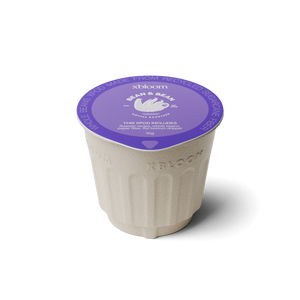Asia, a continent once famous for producing Robusta instant coffee, is becoming more known for its high-quality arabica beans. As coffee lovers seek new places to explore their tastes, Asia is providing many unique and wonderful answers. In our origin series, we will be looking at Indonesia, Vietnam, and China to see how a diverse and emerging coffee culture is giving way to some of the best beans in the modern world.
The South Asian country is the second-largest coffee producer in the world and only second to Brazil, which has a far larger landmass and population. Cafe culture in Vietnam is thriving, influenced by the French. After the Vietnam War, Vietnam turned to robusta coffee to quickly build its economy, filling its streets with small hole-in-the-wall cafes, and serving strong robusta coffee with condensed milk, a staple many tourists would be familiar with. 90% of coffee in Vietnam is made using robusta because it is able to survive in the hands of amateur farmers and capable of yielding large crops with less effort. In terms of taste, robusta is often nuttier and darker than the beans made from arabica, which is a more aromatic and complex bean.
Currently, much of Vietnam’s Arabica comes from the Catimo variant. Catimor is a resilient bean, and as we have discovered through our origin series so far; resilient coffee beans usually lead to a lower quality taste. This is the case too with Catimo. However, with niche coffee and cafe culture maturing in Vietnam, many producers are moving towards rarer and harder to produce varieties such as Bourbon, Typica, and even the well-renowned Geisha.

Cau Dat is becoming a famous place to find wonderful arabica coffees in Asia. Situated in the high Langbian Mountains, which are seeped in volcanic soil, Cau Dat is able to provide the elevation and fertility that is demanded of great tasting beans. Farmers use the traditional dry/natural processing method that has been used in Vietnam for centuries. Farmers pick the coffee cherries and then dry them with the fruit still attached. This creates a refined taste but demands strict conditions that most of Vietnam simply struggles to provide. However, Cau Dat is able to provide this balance with its calm climate and consistently cool temperatures.
The beans have a subtle spicy cedar and dried orange peel flavor with an almond roasted finish. Medium honey sweetness is accompanied by sweet tobacco aromas. And what truly makes this bean so special is its low acidity, which is incredibly rare in Vietnam.

Indonesia is well regarded throughout the world for providing excellent arabica coffee despite 90% of its yield coming in the form of robusta beans. This reputation is largely due to its excellent single origins dominating coffee shops in recent years, especially the world-famous Sumatra.
Indonesian coffee is known for its dark and bold earthy taste. This is thanks to its unique cultivating methods known as giling basah, commonly referred to throughout the world as the wet hulling process.
After picking the cherries the beans are dried to a moisture level of 30%, as opposed to the traditional 11%. As well as earthy notes, this gives the beans a low acidity taste and a high-body feel.
Sumatra Mandheling coffee is considered one of the world’s top specialty coffees. The highly regarded subregions of Sumatra are Lintong and Gayo. Beans grow at elevations ranging from 2,500 meters all the way up to a staggering 5000 meters.
The area is located in Padang west-central Indonesia and is filled with nutrient-dense volcanic soil. Despite being cultivated at a very high elevation the beans have a surprisingly low acidity level.
What also surprises most people when buying Sumatra is that it is not a dark roast.
Starbucks Dark Roast Sumatra has made Sumatra beans synonymous with dark roasted beans, but this is simply the choice of the roaster.
Most Sumatra beans are actually mildly brown in color. Sumatra has a full-body flavor with a syrup consistency. It provides notes of chocolate and nut, with a mellow delicious undercurrent of bark and earth.
Notes of subtle licorice can also be found for those with a sharp discerning palette.

China and coffee don’t usually spring to mind in most people’s imaginations as a wonderful combination. The East Asia country is far more famous for its tea-drinking consumption. However, in recent years coffee has sharply boomed here. There has been a cultural shift as the younger generation moves toward coffee.
However, whilst the change is recent, coffee’s history goes further back in China. French settlers brought coffee to the Yunnan province as far back as the late 19th century. The imprint is there to this day, with most Yunnan plantations producing solely Arabica beans. Yunnan has elevations of 2000 meters, a mild climate and sits at the heart of the bean belt. This combination makes it perfect for growing wonderful and complex beans. Yunnan uses many different variations of processing methods including the honey method. This is when the outer layer of the cherry is removed when drying. The bean is sticky like honey during this time, which is where it derives its name. Such processing creates a fruity well-balanced coffee with a very accommodating sweetness. The coffees vary but their bright acidity offers tastes of apple, pear, and fragrant spices. These flavors are attributed to the climate cooling considerably at night, which leads to a more mature process. Typically, the longer a cherry matures the sweeter it will taste.

Asia is a wonderful and unique continent with a sophisticated and unique coffee culture. A contingent once famous for its tea is becoming a heavyweight in the coffee arena. As farmers work closely with professionals, Asian beans are offering more consistent coffee experiences. Those looking for an array of different flavor profiles to the standards set by Latin America and Africa, will find them here. We hope you have enjoyed our origin series and it's left you inspired to explore further on your tasting journey.






















